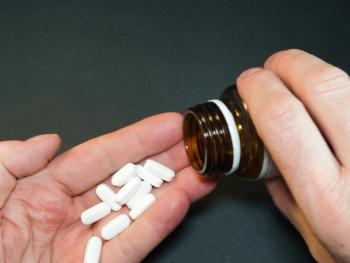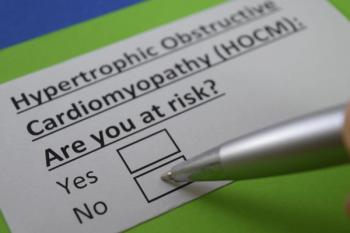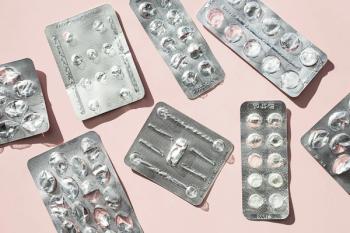
STILL A HOT PROPERTY
Pharmacists are still at a premium across the country, exclusive survey finds
COVER STORY
STILL A HOT PROPERTY
Pharmacists are still at a premium across the country, exclusive survey finds
From Long Island to Los Angeles, from Minneapolis to Miami, from Philadelphia to Phoenix, pharmacists confirmed that there just aren't enough of them to go around anymore. And the shortfall has boosted the readout on their stress-o-meters, according to an exclusive manpower survey conducted by Drug Topics and Hospital Pharmacist Report.
Questionnaires were sent randomly to 1,500 pharmacists; they were returned by 429. Ninety-three percent of the responding pharmacists reported a manpower shortage in their area of the country. But even more Midwestern respondents (97%) feel their region is suffering from a pharmacist deficit. When we asked our respondents about the extent of the shortage, 22% said it's severe and 65% labeled it somewhat severe.
Hospitals are bearing the brunt of the manpower crunch, according to our R.Ph. respondents. Chain drugstores reportedly use their checkbooks as a powerful recruiting tool, luring new and veteran practitioners alike into corporate pharmacy. Higher salaries and sign-on bonuses dangled by most chains make it tougher for hospitals to hire and retain staff. So, it's not surprising that 97% of hospital pharmacists report a shortage in their region, and 90% think it's severe or somewhat severe.
Although 93% of the pharmacists surveyed think there's a shortage, only 43% report an R.Ph. staffing problem in their own pharmacy. Once again, more hospital pharmacists (57%) have firsthand experience with the manpower shortage, compared with 30% of independents and 38% of chains.
Three major factors are at the heart of the pharmacist shortage, according to our survey. First, the switch to the entry-level Pharm.D. degree means an extra year of school and expenses, and the switchover from the B.S. results in a year with no graduates for each pharmacy school. Second, construction of too many chain drugstores and the move to round-the-clock operations put a real strain on the supply of pharmacists. And, third, the influx of women feeds the shortage because they drop out to have children and then prefer part-time hours if they return to the workforce, according to our respondents.
Other forces at work in the shortage include poor working conditions, low wages, and more varied job opportunities. "Six years of intensive scientific training to work a drive-thru window for 16 hours a day for $60,000 a year is not very appealing to young graduates," said a New York independent owner. A North Carolina independent pharmacist laid the shortage at the feet of "blood-sucking third-party insurance companies."
Another Tarheel R.Ph. said, "Pick one: overworked, underpaid, underappreciated, etc." But another New York pharmacist thinks "pharmacy school is too hard. Kids today are stupid and lazy. Who in their right mind would want to put up with the s*** the government and the insurance industry put us through?"
Patients are get-ting shortchanged in terms of face time with a pharmacist, according to 83% of the respondents who see a shortage. Patient counseling time has suffered, according to 90% of independents, compared with 76% of chains and 86% of hospitals.
Not only is there less time for counseling, patient relationships have also been hurt by the shortage, said 63% of our respondents. The sectors that reported the most widespread impact included the East (72%) and the South (69%), as well as chains (71%).
"I feel like I am always rushed and under pressure," said a Maryland chain pharmacist. "Therefore, I can be curt and short with the patients." And an Arkansas independent owner lamented, "I am a pill factory. No time to talk. I'm on the phone with the insurance [companies] too long." At a Kansas hospital in the mid-1990s, pharmacists used to see half of all inpatients, but it's "less than 1% now," said one respondent.
On the bright side, technicians are relieving the workload, according to 86% of the respondents who use techs. Even more independents (96%) rate techs tops for workload reduction, compared with 90% of chains and 76% of hospitals.
Does the R.Ph. shortage mean less time to counsel?*
Since, as one respondent observed, duties keep expanding while the time to do them remains static, some pharmacists have strategies to better manage the time they do have. Some have hired more techs or delegated more duties to them, others get to work an hour earlier or stay later, some have cut pharmacy hours, and others rely more on answering machines and automated refill lines. Many, however, don't use any time-management tricks.
Stressing out
The lack of pharmacist co-workers is leaving skid marks on the psyches of the ones left carrying the increasingly heavy workload. Among the 43% overall who reported being shorthanded in their own pharmacy, 91% agreed that the R.Ph. shortage has increased their stress on the job. Broken down by settings, 98% of independent R.Ph.s experiencing a shortage feel more stress, compared with 92% of chains and 87% of hospitals.
Pharmacists who work in understaffed situations are not the only ones suffering from on-the-job stress. Even pharmacists who don't work in a short-staffed pharmacy are feeling the heat, as nearly two-thirds of our respondents across all settings said that they do indeed experience higher stress levels. Slightly more chain pharmacists (68%) reported higher stress, but 63% of hospital and 61% of independents agreed that things are more tense on the job these days.
Pharmacists in mid-career seem to be carrying around more angst than their younger or older peers. Approximately 69% of pharmacists with 11 to 30 years on the job said they are stressing out to a high degree. That compares with 54% of R.Ph.s with fewer than 10 years behind the counter and 57% of veterans with more than 30 years.
Another yardstick, annual salary, revealed a stress gap, as 47% of pharmacists earning less than $60,000 have high stress, compared with 57% of those earning $60,000 to $74,999. In addition, about 72% of pharmacists earning $75,000 to more than $100,000 shoulder a high stress burden.
When it came to the single biggest source of stress, it was no contest; the hands-down winner was third-party insurance hassles, including prior authorizations, rejected claims, and nonstandard Rx insurance cards. The torture of telephone time with third parties and physician offices came in second on the list of stress inducers. Other blood pressure boosters included long hours, increased Rx volume, too many distractions, and computer glitches.
One Texas chain respondent said stress came from "high daily Rx volume. Most days, I'm slinging pills hoping they hit the right bottle. That is not what the practice of pharmacy should be about. Insurance problems greatly add to the problem."
Another Son of the South groused about "trying to get all the different kinds of [insurance] cards to process. Also, the payment for dispensing is so low, it's demoralizing."
The overall work situation in the pharmacy was cited as the chief stressor for a New York chain pharmacist, who wrote, "I constantly feel I have to rush to stay caught up and I am being pulled in different directions all the time with phone/counsel/fill."
What has your pharmacy done to attract or keep R.Ph.s?*
Customers also took their lumps from our respondents. The top complaint was people who are clueless about how their insurance plans work but who nevertheless expect the pharmacy staff to sort it all out for them. And pushy patients are also taking their toll. "I'm unable to fill prescriptions fast enough to satisfy some patients," said a Wisconsin pharmacist. "Patients have become very rude in recent years." An Illinois independent R.Ph. is bugged by "ignorant people who think three or more of them shouting at me will get them better, faster service."
Silver linings
The manpower shortage is not all stress and angst. Pharmacists are also finding a silver lining in bigger paychecks, sign-on bonuses, and better work flow. And more bosses caught on in the past year to the need to put more goodies on the menu to attract applicants, according to 61% of our respondents.
The top strategy to get new R.Ph.s on board and behind the bench was higher starting salaries, according to 68% of our respondents. Facing the brunt of the shortage, more hospitals (84%) resorted to recruiting by checkbook than independents (58%) or chains (61%). Higher salaries were also the most effective tactic, according to 45% of those who added dollars.
Attempts to lure pharmacists with a signing bonus were offered by 31% of respondents, but more hospitals (42%) and chains (42%) saw the wisdom in flashing cash (maybe even a car) under a prospect's nose. Only 11% rated signing bonuses as the best way to hire pharmacists.
Preventing pharmacists on staff from jumping ship resulted in higher than usual raises, according to 48% of our pharmacists. Improved work flow was cited by one-third of those surveyed, and 30% said they added more techs. Other perks set up for about 20% of the respondents included automation, flex time, meal breaks, and 401(k) plans.
Despite these moves calculated to keep employees content and on the job, the manpower shortage is clearly taking a toll on pharmacists and their patients. And there's no relief in sight yet for a situation that's beyond the control of individual practitioners struggling to make the best of a bad work situation.
Carol Ukens
PHARMACISTS' FINANCIAL FITNESS
Making more money courtesy of the manpower shortage means pharmacists have more opportunities to spend today and save for tomorrow. And that's just what they've been doing, according to our survey.
The average annual compensation of all our respondents was about $74,500. Independent, chain, and hospital R.Ph.s alike figured that roughly 60% of their total yearly income came off the top for living expenses, such as mortgage/rent, utilities, food, clothing, and taxes.
Nonbusiness insurance premiums eat up 6% of the average pharmacist's income. Roughly 5% is given to charity, but since charity begins at home, our respondents set aside about 9% for their own recreation and vacations. Since they have more free hours, it stands to reason that part-time R.Ph.s spend more (11%) on leisure time activities than their full-time peers, who set aside 8% of their income for R&R.
It's a four-letter word despised by most, yet we all live with itdebt. And pharmacists are no exception to the golden rulethe one that states that, as a rule, it's better to have the gold.
The biggest debit item on the typical pharmacist's personal ledger is a home mortgage, which accounts for 62% of the average respondent's debt. Out West, where home prices have shot through the roof, the average mortgage represents 76% of the total debt load. While half of independents list a mortgage as their chief debt source, hospital R.Ph.s said it accounts for 72% of their obligations.
Other money pits include car loans, which account for 14% of pharmacists' debts; credit cards, which add up to 12%; and student loans, which represent 4% of debt load. It's no surprise that pharmacists less than 10 years into their careers report that student loans account for more debt (10%).
Debt reduction was accomplished last year by 62% of our respondents. The prize was taken home by the 71% of R.Ph.s with 30+ years on the job, who decreased their debts. Close behind were the 70% of part-timers who shed debt and the 71% of pharmacists earning less than $60,000, who also tightened their belts.
What are your retirement plan options?*
Keeping the plastic in their pockets was a strategy used by the 18% of our respondents who cut their credit card usage last year. Another 62% maintained their usual plastic pattern, while 20% reached for MasterCard more often. Shop-till-you-drop female stereotypes aside, about the same number of women (17%) and men (19%) cut back on their charges last year. Nearly one-quarter of younger pharmacists also trimmed their credit card usage.
On the debt inflation side, 35% of our respondents overall took on more financial obligations last year. Those most apt to opt for more debt included Western respondents (45%); chain pharmacists (42%); and full-timers (38%). Forty-four percent of pharmacists who are 11 to 20 years into their careers also assumed more debt last year.
The vast majority of our respondents (87%) feel their debt burden is manageable, given their current income levels. But 27% of pharmacists in the West have doubts about dealing with their debts. Their edginess may be due to the financial drain of higher prices for real estate, gasoline, and electricity that haven't hit the rest of the country as hardyet.
Speaking of debt, there's the little fiscal matter of what happens when the patter of little feet turns into the clomp of platform shoes worn by offspring headed for the halls of ivy. College expenses are looming over the 44% of our respondents who have children under the age of 18.
A plan to pay for the college years has been put in place by 70% of the pharmacists who have children, and 78% of those parents think their plans are adequate. The best planners were the 80% of Midwestern R.Ph. parents who've got the college deal doped out. The least prepared to financially shoulder college expenses were the 37% of Southern parents who admitted they have no plan in place, and the 36% of hospital pharmacists who also haven't faced the facts of (college) life.
Where do you invest?
When it came to the economic nitty-gritty of putting their kids through college, the average respondent pegged the tab at $147,700. Whether it's due to higher aspirations and, thus, higher tuitions or just more kids, pharmacists earning more than $100,000 annually think they better set aside $263,500 for college.
Stocks, mutual funds, educational IRAs, and other savings are the main vehicles R.Ph.s are using to prepare for college expenses.
A Michigan independent pharmacist-in-charge plans to rely on "savings for now and only pay approximately one-half of expenses and make the child pay the rest, plus loans." This plan of action contrasts with the Delaware chain dad, who said, "No plan, no money." He may be envious of a South Carolina chain mom, who's banking on "a rich aunt (no kidding)."
Lifesavers
While most Americans have been on a buying binge with more outgo than income, our pharmacist respondents act as though it is still May 1975. That was the last time the U.S. personal savings rate topped 14%, which had dropped to a dismal 0.7% savings rate by last April, according to the Commerce Department's Bureau of Economic Analysis. Identifying more with the ant than the grasshopper, our respondents put aside an average of 14% of their total income for savings and investments.
When it comes to parking their dollars in an investment vehicle, 92% of the pharmacists surveyed choose stocks and/or mutual funds. More Western pharmacists (98%) play the stock market game than those in the East (90%) and South (89%).
Other investment options include bonds and bond mutual funds, owned by 31%; CDs and Treasury notes, found in the portfolios of 31%; and annuities, which are owned by 26%. One out of five R.Ph.s own precious metals, gems, or collectibles. Another 13% are into stock options and futures, although these ventures appeal more to younger pharmacists, 23% of whom play the options/futures markets, while only 4% of those with 30 or more years take such risks.
What are your retirement plans?
Hanging it up
A big item in anyone's personal financial survival kit is how to finance retirement so the money doesn't run out before the years do. Pharmacists do seem to have an array of retirement plan options, in addition to their personal savings.
Employers offer retirement plans to 80% of our respondents. But independents dragged down the overall average since only 56% reported having a plan. Among the retirement options are 401(k) plans, offered to 59% of the pharmacists, pensions (27%), and profit-sharing (27%). Chain pharmacists are most likely to have a 401(k) to bank on, as 96% of our respondents have this popular option, compared with 44% of independent and 41% of hospital R.Ph.s However, more hospital pharmacists (42%) have a pension plan, compared with 15% of chains and 18% of independents.
When the time comes to hang up the spatula, the average pharmacist is aiming for age 63. Although women, who are fast becoming the majority of pharmacists, think age 60 is right for retirement, men favor age 64. Veteran pharmacists, those with more than 30 years behind the counter, intend to hang on longer, with an average retirement age of 67. Younger pharmacists, those with fewer than 10 years on the job, plan to check out at age 61.
Having set the time of their retirement, pharmacists have also calculated how much they plan to sock away before they put in for the gold watch. The average pharmacist plans to have $1.03 million on hand when it's time for the retirement party. As captains of their own business ships, independents expect to cash out their careers with more moolah ($1.19 million) than chain pharmacists ($864,100) and hospital R.Ph.s ($992,600).
There are also gender and age gaps when it comes to retirement treasure troves. Men expect to have an average of $1.07 million, compared with $896,900 for women. Younger practitioners think they'll have more cash cached; those with less than 10 years' experience anticipate a nest egg of $1.03 million; and those with 11 to 20 years on the job expect to have $1.31 million. The 30-year veterans foresee $848,400 on hand, compared with $957,600 targeted by pharmacists 21 to 30 years into their careers.
Overall, it looks like Willie Nelson won't have to stage any PharmAid concerts for pharmacists. Thanks to a manpower shortage at a time of increasing prescription volume and demand for their services, pharmacists are living testimony to the fact that the American Dream is alive and well, thank you very much.
Carol Ukens. STILL A HOT PROPERTY. Drug Topics 2001;14:29.
Newsletter
Pharmacy practice is always changing. Stay ahead of the curve with the Drug Topics newsletter and get the latest drug information, industry trends, and patient care tips.











































































































































































































